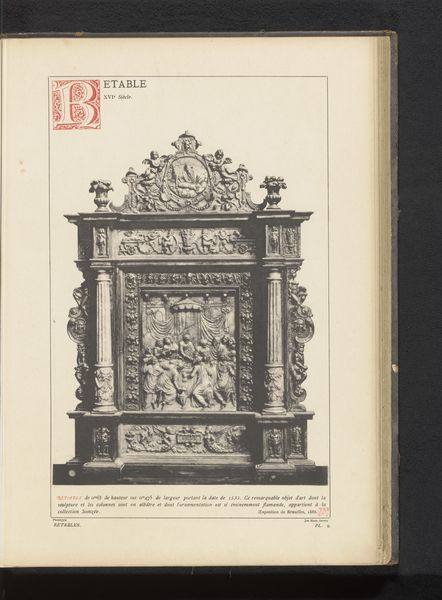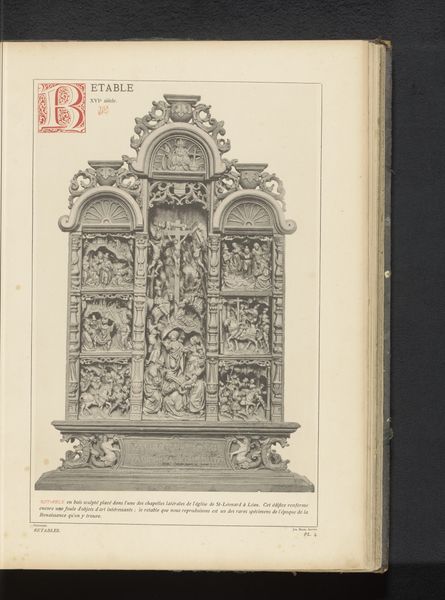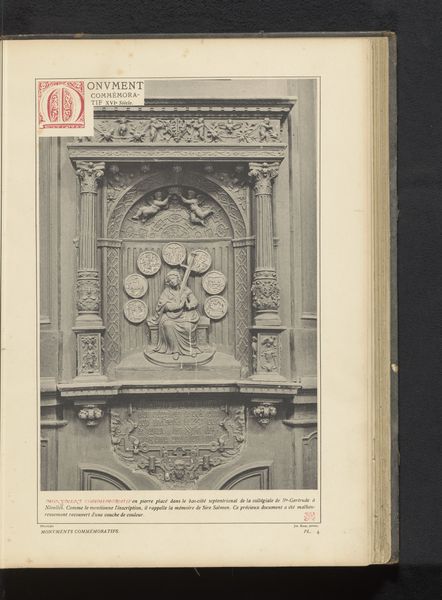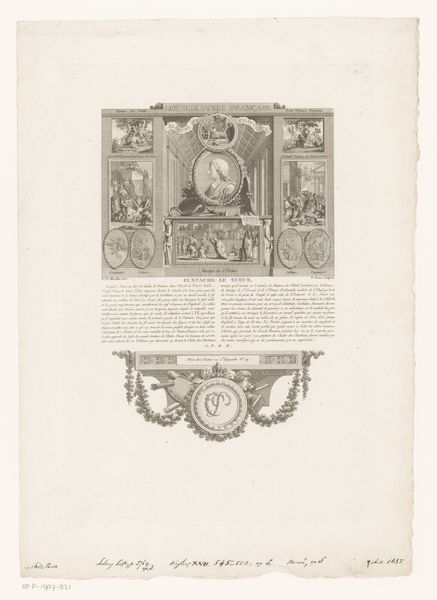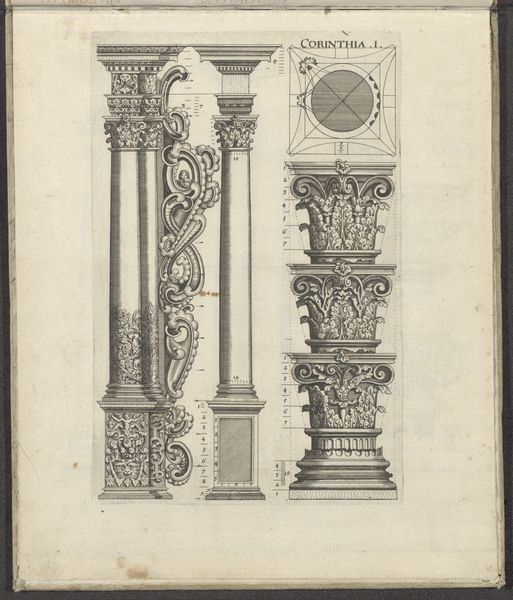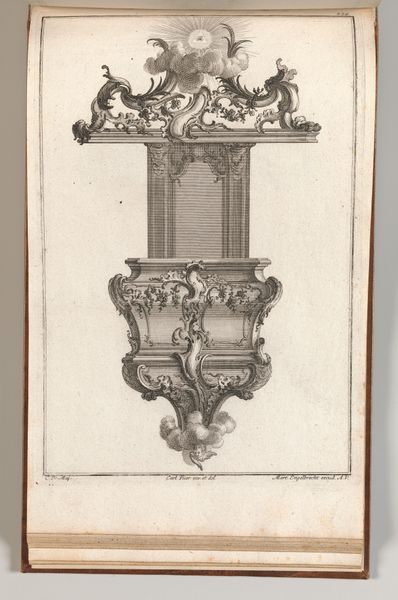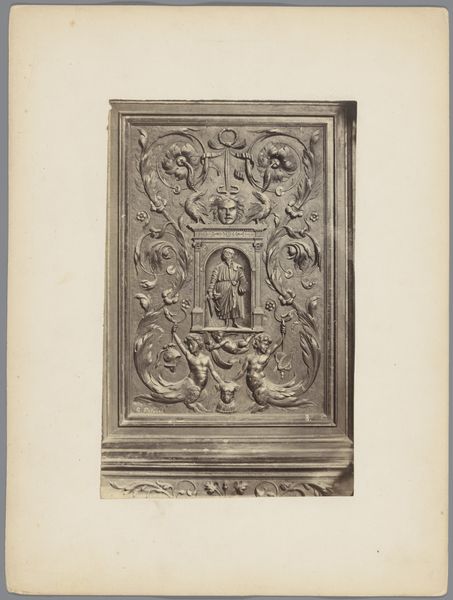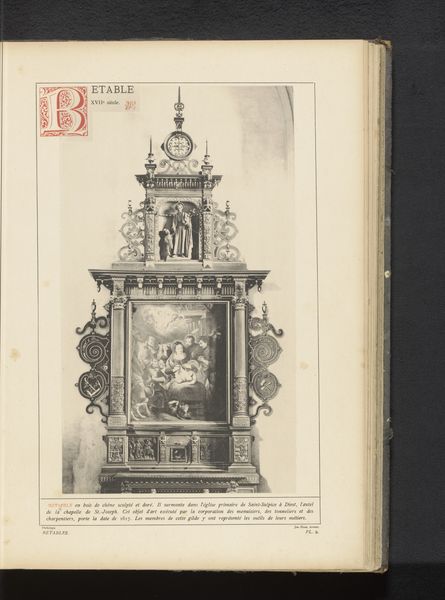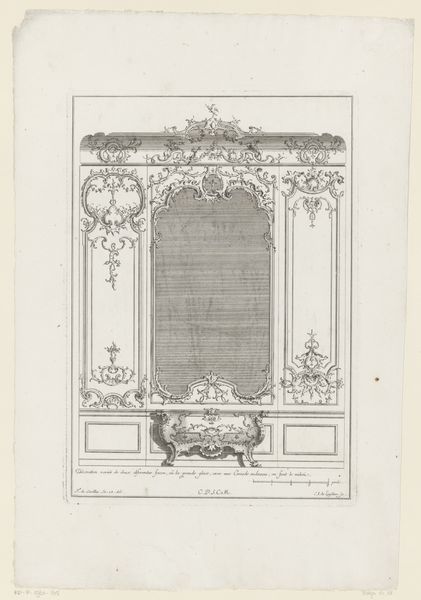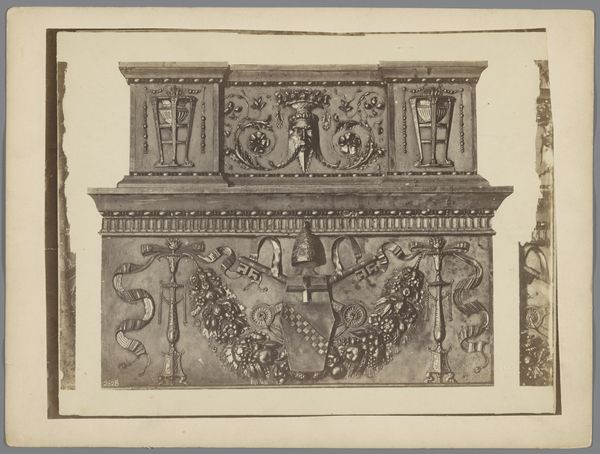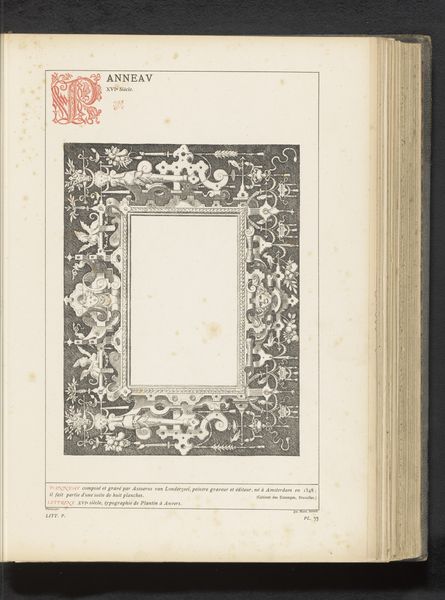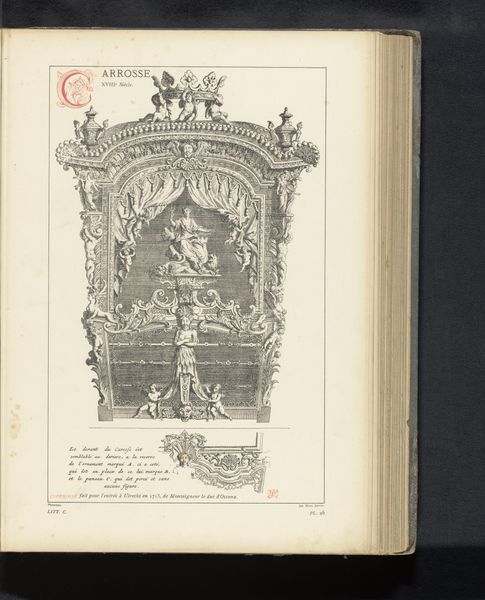
tempera, print, alabaster, relief, sculpture, engraving
#
medieval
#
tempera
# print
#
alabaster
#
relief
#
sculpture
#
history-painting
#
engraving
Dimensions: height 340 mm, width 234 mm
Copyright: Rijks Museum: Open Domain
This alabaster altarpiece resides in the Sint-Salvatorskathedraal in Bruges, crafted by an anonymous artist. Altarpieces like this were central to religious devotion in the late medieval period. They served as visual aids, narrating biblical stories for a largely illiterate population. The arrangement of scenes, with the Virgin and Child at the center, reinforces the importance of maternal and familial figures for Christian dogma, as well as providing a recognizable focus for religious feeling. Produced in Bruges, this piece reflects the city's economic prosperity as a hub for trade and artistry in the region. Guilds played a crucial role, regulating the production and sale of art. The choice of alabaster, a costly material, indicates the wealth of the patron and the prestige associated with religious donations. To fully understand this altarpiece, we must consider the social, economic, and religious context in which it was created. Archival records, guild documents, and theological treatises can all shed light on its meaning and function within the religious community of Bruges.
Comments
No comments
Be the first to comment and join the conversation on the ultimate creative platform.
